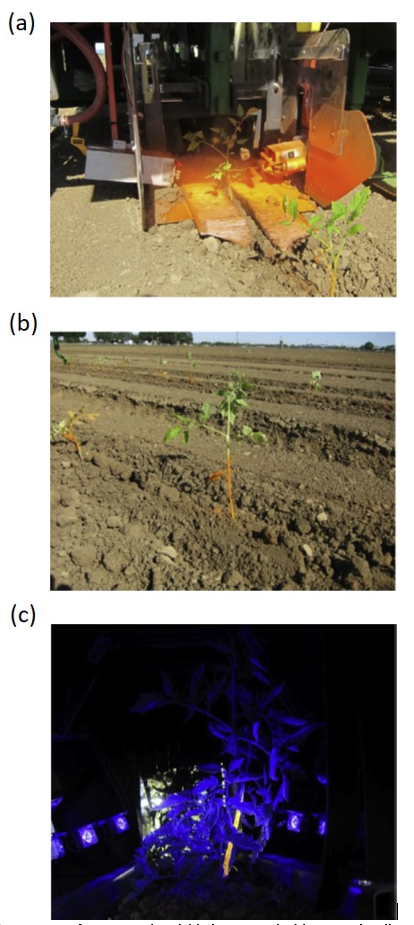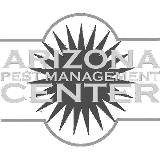Automated in-row weeding machines have been readily available in the Yuma area for several years. These machines utilize a forward-looking camera to identify crop plants and cultivating knives which are moved in and out of the plant row to control in-row weeds. Crop plants are recognized by first identifying green colored and/or chlorophyll signaling objects in captured images. Crop plants are differentiated from weeds primarily based on object size. As such, if the weed is the same size as the crop plant, the weed will be recognized as a crop plant and not controlled. Another problem is that when leaves of weed and crop plants overlap, the system will identify the two plants as one large object. This hinders system precision/performance as weeds close to the crop plant are not controlled. In short, a limitation of automated weeding machines is that they do not perform well in weedy fields.
To overcome this limitation, researchers at UC Davis developed a novel method of recognizing crop plants (Raja et al., 2019). The technique is called crop signaling. It is a system where the crop plant has some unique feature or property (“signal”) that is readily identified by the crop sensing system. Weeds will not have the feature, so crop plants are easily distinguished from weeds. Four crop signaling techniques were developed – a) systemic markers, b) fluorescent proteins, c) plant labels and d) topical markers. All were tested successfully in indoor experiments. Field trials were conducted with plant labels and topical markers in tomato and lettuce (Kennedy et al., 2020). An example of the topical marking system from one of the field trials is shown in Fig. 1. Here, the stem of a tomato plant is sprayed with a crop signaling compound during transplanting. The crop signal is readily visible under UV light. In total, 14 field trials were conducted in Davis, CA and Salinas, CA with a real-time automated weeding machine. Crop plant detection accuracy approached 100% with no false positives, even in weedy fields. Although further development is needed for the system to be commercially viable, this technique shows great promise for the future, and for the development of automated weeding machines with improved crop recognition capability. This will enhance automated weeding machine performance and utility.

Fig. 1. Image of a tomato plant (a) being sprayed with a crop signaling marker compound during transplanting, (b) after transplanting under natural light and (c) four weeks after transplanting under excitation light where the stem is visible with an orange emission signal.
References
Raja, R., Slaughter, D.C., Fennimore, S.A., Nguyen, T.T., Vuong, V.L., Sinha, N., Tourte, L., Smith, R.F. & Siemens, M.C. 2019. Crop signaling: A novel crop recognition technique for robotic weed control. Biosystems Eng. 187 278-291. https://www.sciencedirect.com/science/article/abs/pii/S1537511019308335
Kennedy, H.J., Fennimore, S.A., Slaughter, D.C., Nguyen, T.T., Vuong, V.L., Raja, R. & Smith, R.F. 2020. Crop signal markers facilitate crop detection and weed removal from lettuce and tomato by an intelligent cultivator. Weed Technology 34(3): 342-350. https://www.cambridge.org/core/journals/weed-technology/article/crop-signal-markers-facilitate-crop-detection-and-weed-removal-from-lettuce-and-tomato-by-an-intelligent-cultivator/8DFF48C3F98D7EF73E16703715F07367





